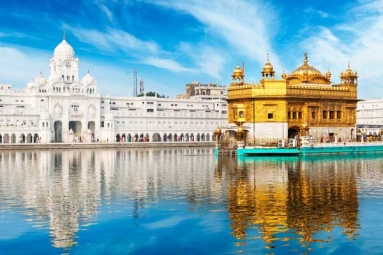Top Things to do in Amsterdam July 22, 2025 19:05
Amsterdam is a great option for people traveling in Europe. There is just something special about this city that makes you want to relax and enjoy the beauty that surrounds you. It's a well-known spot…
Read MoreHow Australia got 4.5 Lakh Indian Tourists In 2024? July 09, 2025 20:18
Australia has become a popular vacation spot for people from India. With its beautiful natural attractions like the Great Barrier Reef and Uluru, along with well-known landmarks like the Sydney Opera House and its diverse…
Read MoreTen Busiest Airline Routes in the World in 2025 June 20, 2025 20:15
On June 12, 2025, the unfortunate incident involving the Air India Boeing Dreamliner 787-7 while en route to London from Ahmedabad sparked widespread concern about the safety and dependability of air travel. Nevertheless, the global…
Read MoreMost Expensive Airbnbs In The World June 06, 2025 20:16
When we embark on journeys, there is often a longing for a place that feels like home yet still brings the joy of adventure. Although hotels and resorts are common choices, the appeal of Airbnbs…
Read MoreWhy The Philippines Deserves A Spot On Your Radar? June 04, 2025 21:19
At times, the most memorable travel experiences arise from destinations that weren't initially on your radar. The Philippines is a perfect example of this. This archipelago has long embodied the essence of dreams—lush rice terraces,…
Read MoreEpic Road Trips across the Himalayas June 03, 2025 12:30
For those who thrive on exhilarating journeys along winding mountain paths, with breathtaking vistas and the invigorating thin air, the Himalayas present some of the most memorable road trips in existence. These excursions are not…
Read MoreFinland is World's Happiest Country for 8th Consecutive Year March 21, 2025 17:30
Finland has once again secured its position as the happiest nation worldwide for the eighth year in a row, as highlighted in the latest World Happiness Report. This annual report, published to coincide with the…
Read MoreMumbai Named Fifth Best Food City In the World December 13, 2024 20:25
Mumbai's unique food culture has been recognized thanks to a recent ranking published by popular food and travel guide Taste Atlas. As part of the 2024-25 Taste Atlas Awards, the guide released a list based…
Read MorePunjab Named as Seventh "Best Food Region" in the World December 11, 2024 20:45
According to the well-known food and travel guide Taste Atlas, Punjab has been included in the "100 Best Food Regions in the World" for the Taste Atlas Awards 2024-25. Punjab was ranked 7th overall, with…
Read MoreFive Hidden Gems In The Middle East For Indians October 21, 2024 15:41
Looking for the best vacation deals this season? With easy connections from India, including direct flights to Ras Al Khaimah, these five destinations promise the perfect mix of excitement, culture and relaxation. Let's start exploring:…
Read MoreComplete Guide to Perpignan Mediterranee in France September 11, 2024 20:58
Much more than the beautiful medieval town that gives the region its name, Mediterranean Perpignan is a mix of urban and natural attractions nestled between the Pyrenees and the Mediterranean. Like the better-known and busier…
Read MoreAre you planning for a Holiday to France? August 28, 2024 20:37
Crisp baguettes, stunning works of art, delicious cuisine and fine wines make France a traveller's paradise - so when is the best time to indulge in these delicacies? Many people believe that August is the…
Read More













